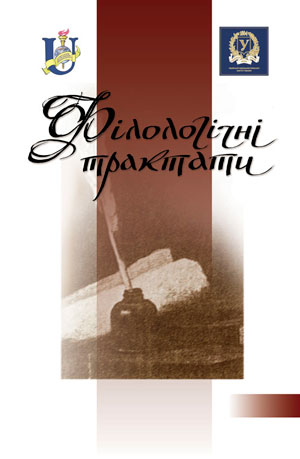USE OF COLLECTIVE NOUNS FOR FAUNA DENOTATION (A CASE STUDY OF ENGLISH-LANGUAGE NEWS SITE PUBLICATIONS)
Keywords:
collective nouns, quantifiers, metaphor, peripheral subdivision, seme of collective, faunaAbstract
The article considers the essence of collective nouns, which are traditionally defined as nouns denoting a group of objects or living beings. Today, a large number of collective nouns are found in many different sources such as grammar textbooks for schoolchildren, crossword puzzles, collections of scientific papers, journalistic texts, and more. However, this is by no means a complete list. Those collective nouns which have passed tests in time in the course of their historical development remained in use. Although collective nouns are widely used in colloquial language, most of them are not included in modern dictionaries, even after centuries of use. Catherine Soans, head of Oxford University Press's online dictionaries, explains: “We need evidence of genuine use in our databases before we consider adding them to one of our dictionaries. Therefore, for most nouns there are no dictionary articles, such as a murder of crows, they are perceived only as linguistic curiosities” (Gale). Due to their unusual form and humorous nature, collective nouns are perceived as occasional authorial units. This fact is proved by our analysis of the material of English-language sites. The basis for the formation of collective nouns to denote the fauna were certain associations and characteristics of certain species of animals. It has resulted in their unusual sound. Although some collective names of animal groups have been invented, they have enriched the vocabulary of modern spoken English and are used in different publications. It has been proved that in the formation of collective nouns to denote the fauna, associations related to the shape of the object, quality, other characteristics of animals, and superstitions, as well as stylistic techniques are used. They are alliteration, play on words, and metaphor. The relevance of their use is confirmed by the analysis of articles of English-language sites. The corpus of collective nouns to denote fauna increases both due to the secondary nomination and with the help of productive models of word formation, in particular, suffixation. It has been established that the class of quantifiers is an open class of words, the composition of which is constantly replenished with new collective nouns to denote fauna due to changes in extralinguistic nature that occur in human lifeDownloads
Published
2022-05-04
How to Cite
Ushchapovska, I., & Mushtai, . K. (2022). USE OF COLLECTIVE NOUNS FOR FAUNA DENOTATION (A CASE STUDY OF ENGLISH-LANGUAGE NEWS SITE PUBLICATIONS). Philological Treatises, 13(2), 82–94. Retrieved from https://tractatus.sumdu.edu.ua/index.php/journal/article/view/1009
Issue
Section
Articles














